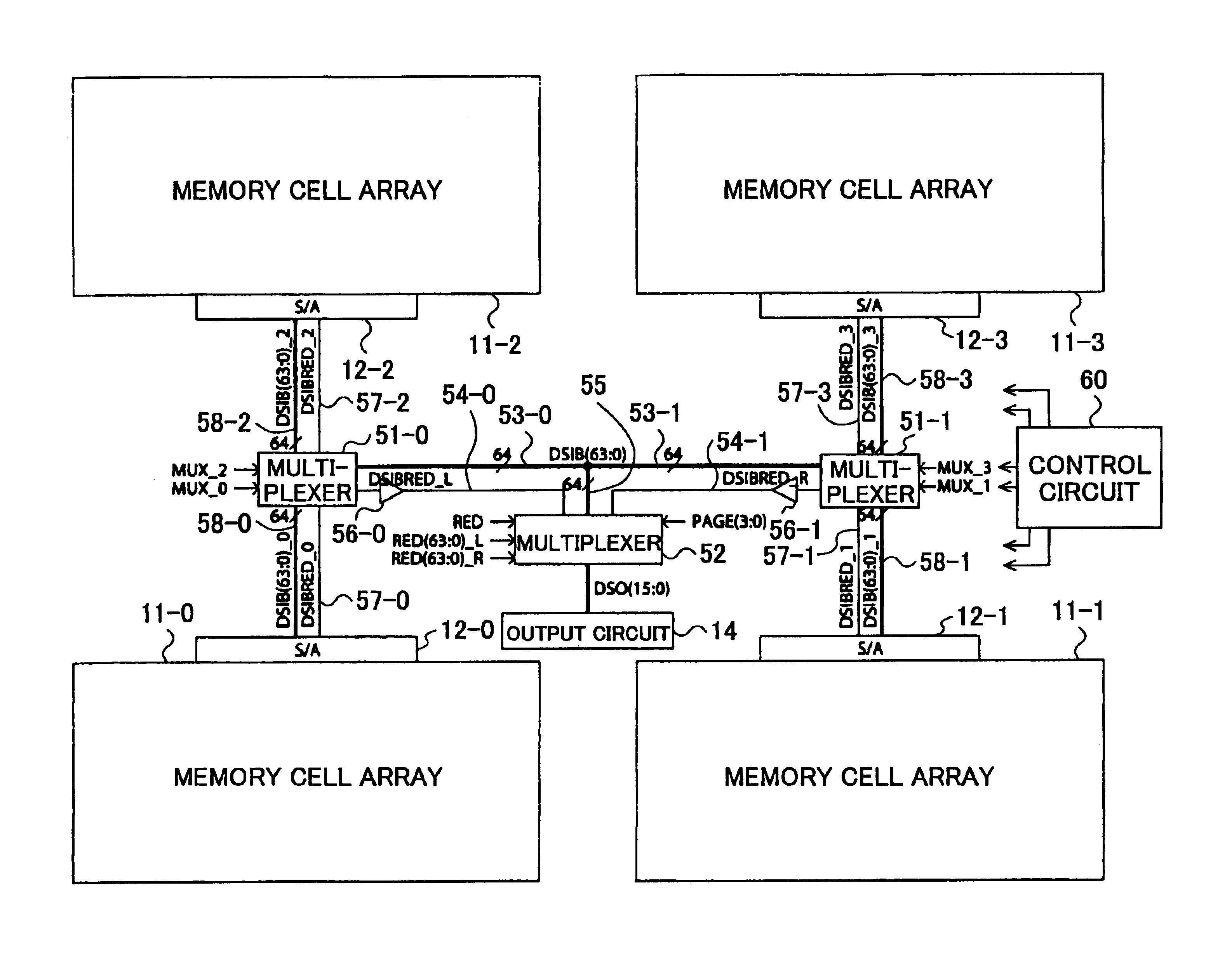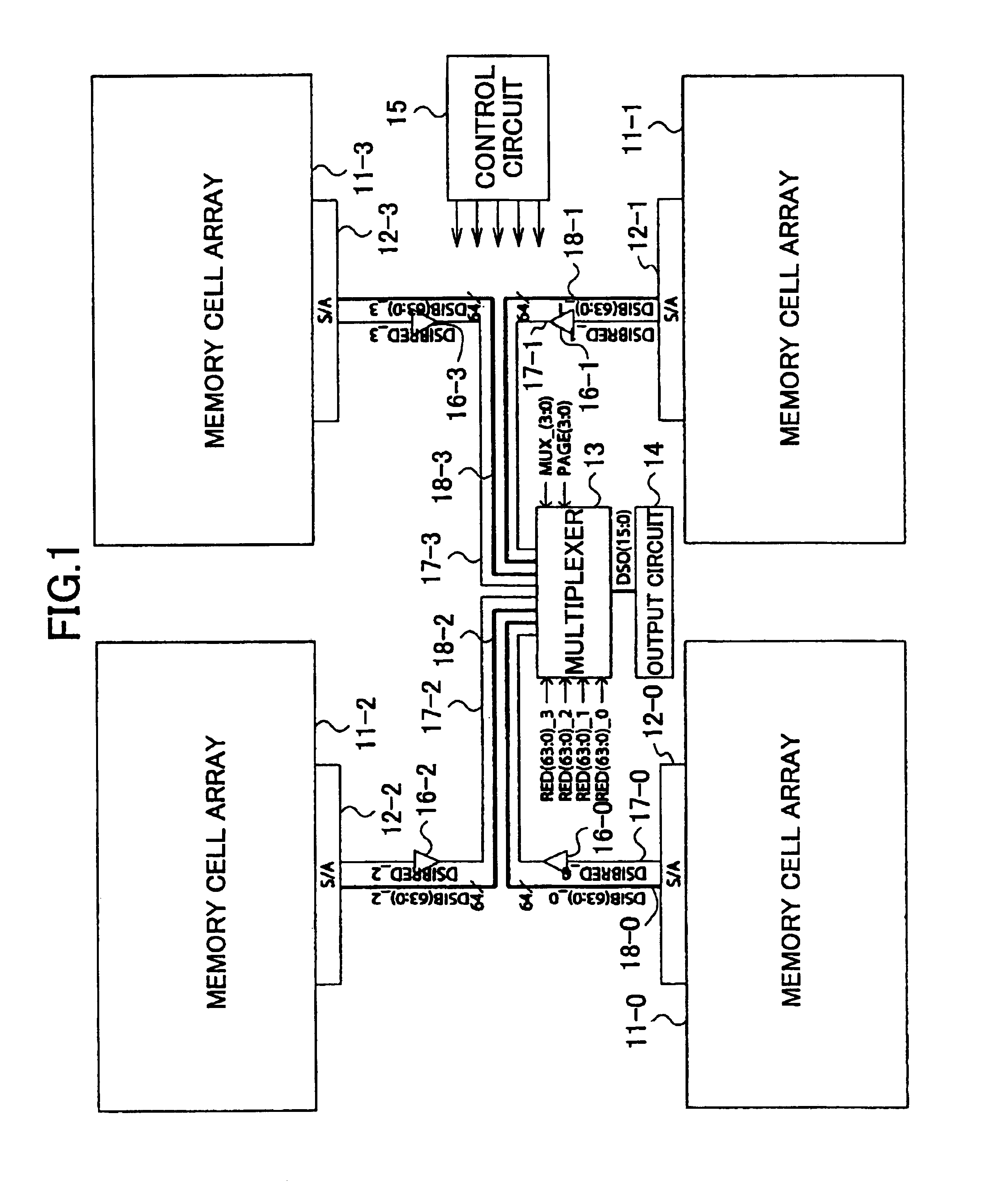Semiconductor memory device with memory cell array divided into blocks
a memory cell array and semiconductor technology, applied in the field of semiconductor memory devices, can solve the problems of slow data-read speed of memory cells, and achieve the effects of reducing the number of buffers, reducing the length of data signal lines and redundancy signal lines, and reducing the load capacitance of signal lines
- Summary
- Abstract
- Description
- Claims
- Application Information
AI Technical Summary
Benefits of technology
Problems solved by technology
Method used
Image
Examples
Embodiment Construction
[0037]In the following, embodiments of the present invention will be described with reference to the accompanying drawings.
[0038]FIG. 4 is a block diagram showing an example of the construction of a semiconductor memory device according to the invention in which the memory cell block is divided into a plurality of blocks.
[0039]The semiconductor memory device of FIG. 4 includes memory cell arrays 11-0 through 11-3, sense amplifiers 12-0 through 12-3, an output circuit 14, multiplexers 51-0 and 51-1, a multiplexer 52, data signal lines 53-0 and 53-1, redundancy bit signal lines 54-0 and 54-1, data signal lines 55, buffers 56-0 and 56-1, redundancy bit signal lines 57-0 through 57-3, data signal lines 58-0 through 58-3, and a control circuit 60.
[0040]The memory cell arrays 11-0 through 11-3 include memory cells arranged in rows and columns, a plurality of word lines, a plurality of bit lines, an X decoder for selecting a word line, and a Y decoder for selecting a Y address. Data access...
PUM
 Login to View More
Login to View More Abstract
Description
Claims
Application Information
 Login to View More
Login to View More - R&D
- Intellectual Property
- Life Sciences
- Materials
- Tech Scout
- Unparalleled Data Quality
- Higher Quality Content
- 60% Fewer Hallucinations
Browse by: Latest US Patents, China's latest patents, Technical Efficacy Thesaurus, Application Domain, Technology Topic, Popular Technical Reports.
© 2025 PatSnap. All rights reserved.Legal|Privacy policy|Modern Slavery Act Transparency Statement|Sitemap|About US| Contact US: help@patsnap.com



